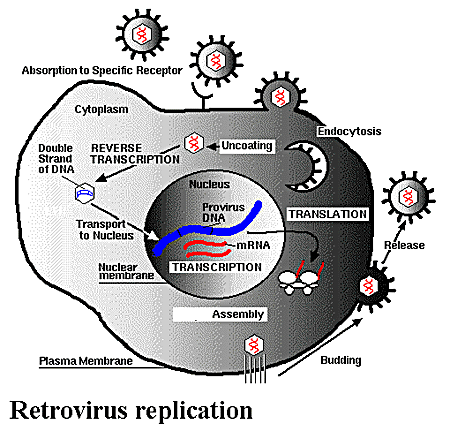Retrovirues is the scariest guests. These molecular parasites attach themselves to the host's DNA. Unfortunate hosts cannot even free themselves by killing them, as they continue to stubbornly remain after death.
About 8% of the human genome has 'fossil record' of extinct retroviruses that we inherited from our ancestors, who were victims of this virus. That record allows scientists to study what killed this ancient virus, providing insight into the battle with today's viruses, such as HIV.
Researchers from Rockefeller University have restored two groups of primate retroviruses to study whether defense proteins have rapidly evolved in humans and other primates that can destroy them. They discovered that a protein, called TRIM5α, was completely useless. However. However, by carefully studying the rest of this disappearing virus found in the chimpanzee and brown monkey genomes, the researchers found signs that another protein - APOBEC3 - is the agent that kills this virus. The study is published in PLoS Pathogens.
Paul Bieniasz, a professor who runs the Retrovirology laboratory and a scientist at the Aaron Diamond AIDS Research Center, said: 'It's like discovering a fossil skeleton with a spear piercing the head. . You can be quite sure how that person died. In this case, we can even do tests to check if the spear is placed in the skull after the person dies. DNA evidence is very clear on that point. '

Replication process of retroviruses.(Photo: emc.maricopa.edu)
Researchers recreate parts of retroviruses that have hidden themselves in the DNA of ancient primates several million years ago. They know quite well the exact time, because these viruses are not found in humans. Humans separated from primates about 6 million years ago. The goal is to explain why these ancient viruses did not spread to people like HIV and to find out which agents in humans protected us from these viruses.
Working with parts of the extinct virus preserved in primate DNA, the researchers forced modern retroviruses, found in mice, to produce a protein similar to those of ancient relatives. its. Bieniasz, postdoctoral researcher David Perez, and graduate student Steven Soll found that a defense protein - TRIM5α - does not prevent viruses from infecting other cells, contrary to the recent findings of a room. other experiments. Analysis of many 'fossil' DNA containing retrovirusesm researchers found a strange mutation that may have caused the virus to stop reproducing, the mutation created by APOBEC3. They identified mutations responsible for deactivating retroviruses differently depending on the species and virus.
Until now, Bieniasz's experimental laboratory has verified that APOBEC3 is involved in the fight against retroviruses but does not destroy all of them, or that the protein is responsible for preventing spread to humans because of human proteins. APOBEC3.
Soll said: 'When you learn something that happened millions of years ago, it's difficult to explain it in the laboratory'.
 'Fine laughs' - Scary and painful torture in ancient times
'Fine laughs' - Scary and painful torture in ancient times The sequence of numbers 142857 of the Egyptian pyramids is known as the strangest number in the world - Why?
The sequence of numbers 142857 of the Egyptian pyramids is known as the strangest number in the world - Why? History of the iron
History of the iron What is alum?
What is alum? Why can't the flu virus be eradicated?
Why can't the flu virus be eradicated?  Garlic does not kill coronavirus
Garlic does not kill coronavirus  Does the corona virus stick to clothes, shoes, hair, papers?
Does the corona virus stick to clothes, shoes, hair, papers?  Top 10 things doctors recommend for living with SARS-CoV-2
Top 10 things doctors recommend for living with SARS-CoV-2  Vaccines to prevent future strains of Corona virus
Vaccines to prevent future strains of Corona virus  What you need to know about the virus that has a 70% mortality rate in India
What you need to know about the virus that has a 70% mortality rate in India 